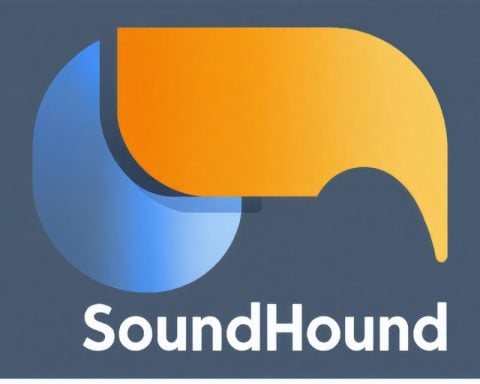- D-Wave QBTS, a pioneer in quantum computing, secured a significant deal with Forschungszentrum Jülich, reinforcing its leadership.
- The “Quantum Uplift” initiative aims to attract competitors’ dissatisfied customers to boost growth, despite an 18% stock decline this year.
- Financial performance shows improvement with reduced quarterly losses and cash outflows, but a 27% revenue decline is concerning.
- The new LaunchPad program provides trial access to D-Wave’s quantum solutions, expanding public sector reach through Carahsoft collaboration.
- The Advantage2 processor, with over 4,400 qubits, enhances computational power, appealing to industries like logistics and finance.
- Analysts are optimistic, delivering “Strong Buy” ratings, as D-Wave enhances strategies, standing strong in the quantum technology forefront.
Quantum computing stands at the cusp of reshaping the technological landscape, and D-Wave QBTS, a pioneer since 1999, is leading the charge. As the world’s first commercial supplier of quantum computers, D-Wave recently secured a landmark deal with Forschungszentrum Jülich, a prestigious German research institute. This pivotal sale of an on-premise quantum system marks a significant milestone, underscoring D-Wave’s prominent position in the quantum realm.
Yet, navigating the tumultuous waters of market dynamics, D-Wave introduces its “Quantum Uplift” initiative. This strategic maneuver aims to lure customers dissatisfied with competitors, signaling a calculated push to reclaim growth amidst a backdrop of an 18% stock decline this year after a remarkable 300% surge in the previous 52 weeks.
Financially, D-Wave reported a shrink in quarterly losses alongside a decrease in cash outflows, hinting at operational improvements. However, a worrying 27% revenue plunge, driven largely by a dramatic drop in professional services income, casts a shadow over this progress.
In response, the company launched the LaunchPad program, offering trial access to its quantum solutions, and broadened its public sector reach through a promising partnership with Carahsoft. Notably, D-Wave’s sixth-generation Advantage2 processor, now boasting over 4,400 qubits, demonstrates a leap in computational prowess, amplifying its appeal across varied industries from logistics to finance.
Analysts remain bullish, offering “Strong Buy” ratings with a target price that hints at potential upside. As D-Wave calibrates its strategies and sharpens its technological edge, it stands steady at the forefront of a quantum future, poised to transform possibilities in vast, untapped markets.
Quantum Leap: Why D-Wave is Poised to Revolutionize Industries
Exploring D-Wave Quantum Computing: Innovations and Market Dynamics
How-To Steps & Life Hacks: Understanding Quantum Computing for Businesses
1. Assess Business Needs: Identify specific problems that could benefit from quantum solutions, such as optimization in logistics or complex predictive models in finance.
2. Select Quantum Solutions: Utilize platforms like D-Wave’s LaunchPad to experiment with quantum technology solutions that best fit your business needs.
3. Integration Strategy: Develop a step-by-step plan to integrate quantum computing into existing IT infrastructures, ensuring compatibility and smooth transition.
4. Collaborate with Experts: Engage with quantum computing experts and utilize resources offered by D-Wave to maximize the efficiency of the new technology.
5. Continuous Evaluation: Regularly review the performance and ROI of quantum applications to ensure business objectives are being met effectively.
Real-World Use Cases
– Logistics and Supply Chain Optimization: Many logistics companies are using D-Wave’s quantum computing to optimize delivery routes, inventory management, and schedule planning, resulting in significant cost savings.
– Financial Services: In finance, quantum computing models offer advanced capabilities for portfolio optimization, risk analysis, and fraud detection, pushing the envelope of traditional computational limits.
– Healthcare: Quantum computing is enabling more precise drug discovery and patient data analysis, providing a platform for accelerated medical breakthroughs.
Market Forecasts & Industry Trends
The quantum computing market is projected to grow exponentially over the coming decade. According to a report by MarketsandMarkets, the quantum computing market size is expected to reach USD 1,765 million by 2026, at a CAGR of 30.2% from 2021 to 2026. D-Wave’s position as a pioneer gives it a competitive edge in serving sectors like pharmaceuticals, cybersecurity, and AI-driven analytics.
Reviews & Comparisons
D-Wave’s systems are often compared with other quantum computing platforms like IBM Q and Google’s Quantum AI. While IBM and Google focus on gate-based quantum computers, D-Wave specializes in quantum annealing, offering advantages in specific optimization problems.
Controversies & Limitations
Despite its promise, quantum computing faces challenges around noise interference and error rates. Patent disputes, especially over quantum annealing technology, occasionally arise but are part of the growing pains in this nascent field.
Features, Specs & Pricing
– Advantage2 Processor: Features over 4,400 qubits, showcasing significant improvements in processing power and efficiency and rapidly positioning D-Wave as a front-runner in quantum technology.
– Pricing Model: D-Wave provides flexible pricing models tailored to customer needs, often based on computing time or subscription access through platforms like LaunchPad.
Security & Sustainability
Quantum computers, including D-Wave’s, offer significant advances in encryption and cybersecurity. However, their energy consumption remains a topic of sustainability concern, pushing ongoing research into more energy-efficient quantum systems.
Insights & Predictions
Experts predict rapid adoption of quantum computing across traditional and emerging industries. As more businesses familiarize themselves with its possibilities, sectors like aerospace and national security are predicted to drive demand.
Pros & Cons Overview
– Pros: High complexity problem-solving, enhanced data processing speed, and competitive edge in technological innovation.
– Cons: Early-stage adoption challenges, high costs, and the need for specialized skills and infrastructure.
Actionable Recommendations
– Stay Informed: Regularly update your understanding of quantum advancements through platforms like the D-Wave LaunchPad.
– Start Small: Pilot quantum projects with clear goals and metrics to measure success before fully scaling up.
– Invest in Talent: Educate teams to bridge the knowledge gap and harness quantum computing capabilities effectively.
For more insights on quantum computing, visit DWAVE Systems.


















